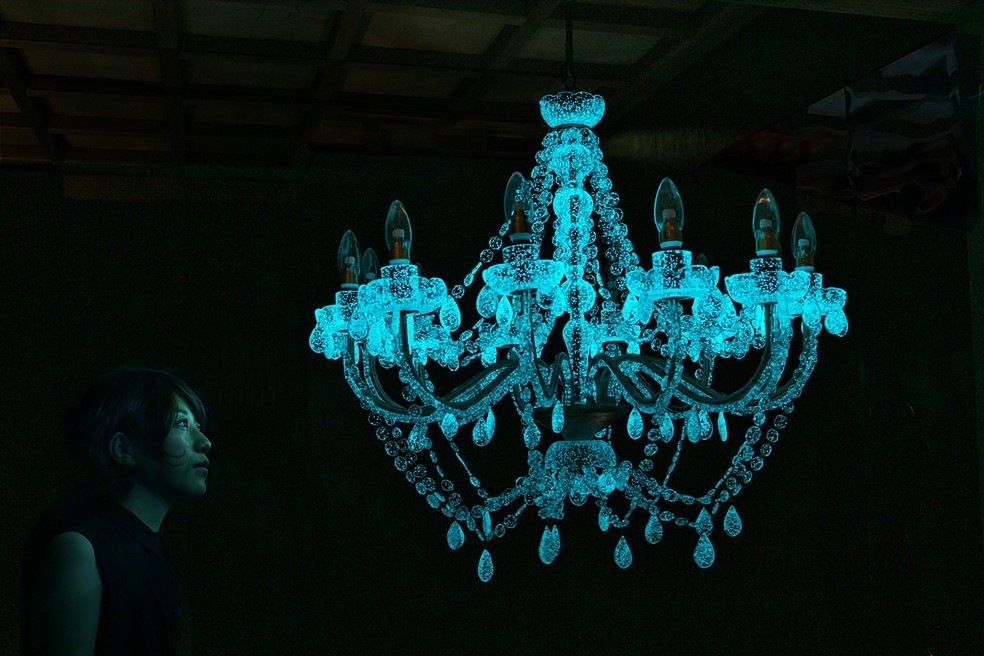Rui Sasaki is a Japanese conceptual glass artist and educator who, in recent years, has gained international notoriety for her ethereal and sometimes surrealistic work. She completed her MFA at Rhode Island School of Design in 2010 and has since been invited to participate in many artist-in-residence programs and exhibitions all over the world. Last month, Sasaki wrapped up a month-long residency in Stockholm funded by the Swedish Arts Grants Committee, and she has three major exhibitions opening in the coming months: “Inervals between Nature and Artifact” curated by Koichi Yoshimura in Osaka, Japan, “The Poetics Of Weather” on view at a historical temple in Hoen-ji in Kanazawa, Japan, and “Young Glass 2017” at Glasmuseet Ebeltoft in Ebeltoft, Denmark. Beginning in April, Sasaki will work as a faculty-member at Kanazawa Utatsuyama Kogei Kobo in Kanazawa, Japan, the traditional craft epicenter of the eastern world. Recently, the GLASS Quarterly Hot Sheet had the opportunity to discuss Sasaki’s work and source of inspiration with the artist herself via an email conversation.
GLASS Quarterly Hot Sheet: How have your travels influenced your work and general aesthetic?
Rui Sasaki: I've been traveling a lot, especially since March 2016. Perceiving different aesthetics in foreign places forces me to question my own concept, process, and vision when I am back home. Experiencing different environments is vital in recognizing the subtleties hidden in everyday life. My travels help me to create refined, nuanced concepts. Weather as a theme is one example of this: I don’t realize how physically and mentally essential sunshine and rain are when I’m not in Toyama.
I also research native languages when visiting new places. Exploring the expression of word in different places allows me to discover different ways of thinking .
Since moving back to Japan in 2012, I've been interested the feeling of comfort, but comfort as a result of reverse culture shock. What is inherently intimate about home?
Meeting people in different places is also very important for me. Travel makes that which I thought to be impossible at home possible. Different cultures and belief systems help me understand Japan in a way that I wouldn't’t otherwise.
GLASS: Where are you living now?
Rui: I just moved to Kanazawa for my next journey. I was living in Toyama since starting work at Toyama City Institute of Glass Art (TIGA) in 2013. Before moving to Toyama, I lived in Kyoto and a tiny island called Awashima to teach and work.
I’m excited about living in Kanazawa, but Toyama offered me such an amazing environment and community of artists to keep my projects moving forward.
I really struggled creating in Japan after moving back from the United States. As many glass artists know, Toyama is the largest glass community in Japan.
The extraordinary natural landscape of Toyama also inspires me—the mercurial weather, the mountains, the extremely high humidity, and the local vegetation that I played among in my childhood.
Besides art, Toyama has such a rich natural food culture and a friendly rural area with easy access to central cities in Japan, like Tokyo and Osaka.
GLASS: How do you balance the Eastern and Western aesthetic in your work and process?
Rui: I've never intentionally done so. I surely feel the difference between Eastern and Western aesthetic. However, I strive to find my own language to explain the distinction between the two.
I believe most of my aesthetic comes from the Eastern culture, because I grew up in Japan with Japanese parents. However, the Western aesthetic allows me discover new insights about the Eastern aesthetic.
The experience of both helps me to carve my own path. Having experience both, I’m more sensitive to ambiguity, idiosyncrasies, and subtleties in Japanese historical art, craft, and design.
GLASS: How would you describe the kind of work that you’re creating now?
Rui: I'm preparing my work for a few upcoming exhibitions in April and May. The work that I am going to show is based on my project and research from recent travels.
I'm making a new body of work with a variety of plants that I have collected along the way. I am preparing an exhibition at a Japanese temple with work made from preserved plants that I found on the temple grounds. I made those pieces during an artist-in-residency program at the Corning Museum of Glass last fall.
In Stockholm, I produced work centered around weather and its mental and physical effects. Those pieces will also be shown in the exhibition.
Besides my upcoming exhibitions, I'm interested in continuing to work with phosphorescent glass and neon and plasma techniques for ongoing projects related to the theme of weather.
GLASS: How is your work and aesthetic evolving?
Sasaki: Experiencing different places has raised more conceptual and technical questions. I don't have any clear answers, but asking the questions is much more essential than knowing the answers. Without ever questioning my interests, I wouldn't make any work at all.





